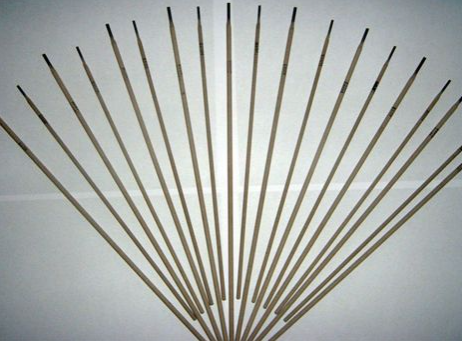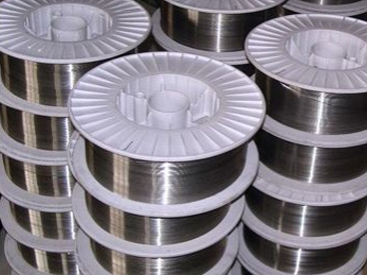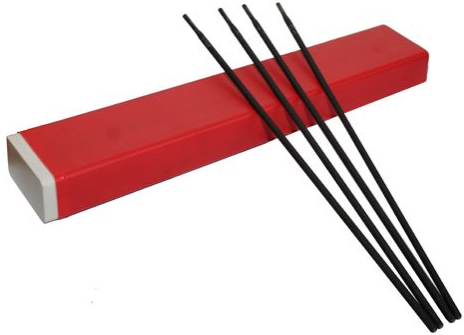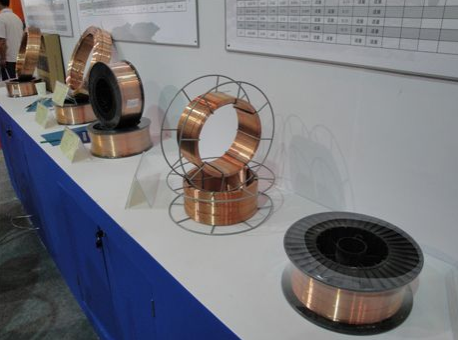Achieving quality results in any welding operation is a matter of having the right equipment and filler metals, and the right level of welding operator skills to get the job done efficiently and accurately. In a highly competitive industry, productivity and cost savings are important.
In addition to proper welding techniques, it is beneficial for the welding operator to have an in-depth knowledge of the welding procedures required for the application and to understand the classification of the filler metals used.
The American Welding Society (AWS) filler metal classifications provide valuable information on their availability, including the materials for which they are best suited and how to use them in a manner that maximizes performance. They also provide insight into the mechanical properties that a given filler metal will provide.
In other words, AWS classifications set the standard for filler metals, so there is a general understanding or knowledge of what a particular rod electrode or wire will produce. The filler metal manufacturers then use these standards for their product formulations and drive greater consistency between manufacturers from a welding, chemical, and mechanical properties perspective.

AWS ECI
If a primary filler metal supplier runs out of given filler metal or has problems acquiring it, a secondary manufacturer may offer a product with the same AWS classification to provide the same chemical and mechanical properties-even if the filler metal has nuanced differences in the welding process. For example, wetting action or arc initiation may differ between similarly classified products from different manufacturers.
Knowing the AWS classification helps welding operators when they are unfamiliar with a product and don't necessarily know what its trade name is used for. With this information, they can view the classification and understand its characteristics-for example, how to operate it and whether it offers low diffusion of hydrogen.
The most important information provided by the AWS classification is the indicators, which indicate that.
1) whether the product is a rod electrode, a solid wire, or a tubular wire
2) The location where it should be used
3) Its strength classification
4) Its chemistry/composition

Flux Cored Wire Gas-shielded
Keep in mind that AWS classifications are named differently between rod electrodes, solid wire, and flux-cored wire as discussed here. However, the products in the following specification examples - AWS A5.1 (carbon steel electrodes for shielded metal arc welding), A5.18 (carbon steel electrodes and rods for gas shielded arc welding), and A5.20 (carbon steel electrodes for flux cored wire) arc welding) - are all filler metals that can be used in a variety of filler metals for a variety of low-carbon steel applications. These include general fabrication, railcar fabrication, shipbuilding, heavy equipment fabrication, etc.
A5.1 (Carbon Steel Electrodes for Shielded Metal Arc Welding)
This AWS specification provides a common classification for welding rods in addition to other filler metals: the standard for E7018.
As with other rod electrodes, E7018 products have four key symbols in their classification.
A welding rod is defined by AWS A3.0 Standard Welding Terms and Definitions as "a component of a welding circuit through which current is conducted and terminated by an arc, a molten conductive slag, or a base material."
E indicates that the filler metal is a welding rod, 70 provides tensile strength in KSI, 1 indicates the weld position, in this case, the full position, and 8 indicates the coating on the product.
Rod electrodes may also have optional indicators as shown in the example above.

AWS A5.11 ENiCrFe-3
- 1 - indicates that the electrode meets the requirements for improved toughness and ductility
- H - indicates that the electrode meets the requirements for diffusion hydrogen testing
- R - indicates that the electrode meets the requirements for moisture absorption testing / optional supplement for low hydrogen electrodes
Some rod electrodes are also marked with M, indicating that the electrode is intended to meet most military requirements.
A5.18 (Carbon Steel Electrodes and Rods for Gas Shielded Arc Welding)"
AWS ER70S-3 solid wire is a common filler metal in the A5.18 specification. Like the rod electrode example above, the solid wire has a designation beginning with E (electrode), but is also accompanied by an R (rod.) A welding rod is defined in AWS A3.0 Standard Welding Terms and Definitions as "a welding filler metal, usually packaged in straight lengths, that does not conduct welding current."
This means that the product can be used in either electrode form or rod form (a solid rod is usually cut to length for the GTAW process). The S at the end of the classification indicates that this is a solid wire product. A description of other items specified in the AWS solid wire classification, including chemical composition.
The solid wire may also have an optional H designation, which, like rod electrodes, indicates that the electrode or rod meets the requirements for diffusible hydrogen.

GB ER50-3 AWS ER70S-3
A5.20 (Carbon Steel Electrodes for Flux Cored Arc Welding)
Finally, as an example of AWS classification for gas shielded flux cored wires, consider the E70T-1X product. The classification description uses an additional designation, such as C/M, which indicates that the wire can be used with 100% CO 2 or a mixture of CO 2 and argon gas. Similarly, H stands for diffused hydrogen level.
The optional designation J here indicates that the electrode meets the requirement for increased toughness and will deposit weld metal with a CVN characteristic of at least 20 foot-pounds at -40 degrees Fahrenheit.
The D or Q designator may also appear in the AWS classification for flux-cored wire. These indicate that the weld metal will meet the supplemental mechanical property requirements for welding using a low heat input, fast cooling rate procedure, and a high heat input, slow cooling rate procedure.
Regardless of the filler metal used - electrode, solid wire, or flux-cored wire - knowing the AWS classification can help welding operators understand the performance they will obtain from a given product and the best way to use it. As with any part of the welding operation, more knowledge leads to better weld performance.











